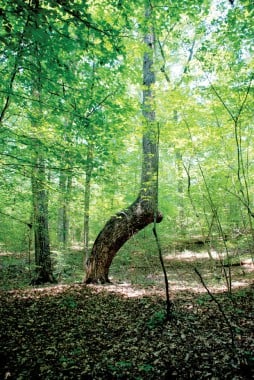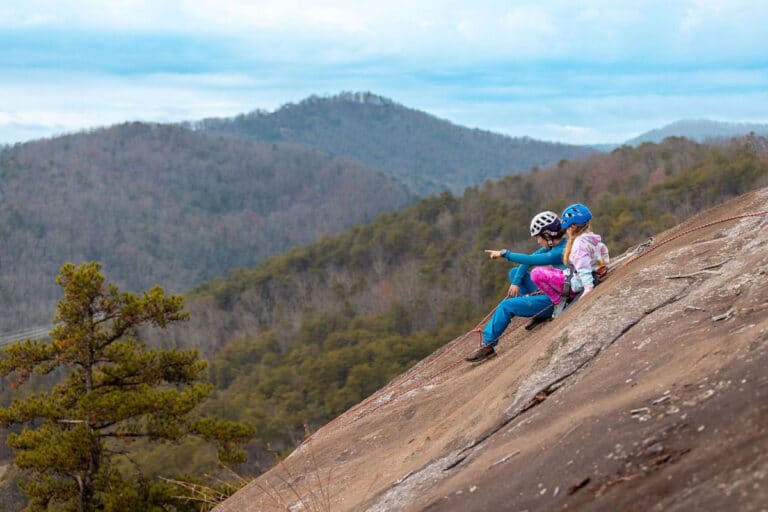Cherokee bent-trunk guideposts are natural signage
Imagine a scene back in time, more than 200 years ago, when a young Cherokee Indian might be found striding quietly through the dense wilderness of North Carolina. He might be in search of water, a sacred burial site, or perhaps even a specific kind of medicinal plant. This young Cherokee could only rely on nature to guide him. In his time, of course, there weren’t white blazes or yellow diamonds or blue squares indicating the right path.
Explorers nowadays go into the Blue Ridge Mountains armed with water, maps, a compass and perhaps even a GPS. However, many Native American tribes in the South—like the Cherokee, Catawba, and Creek—used trees as their guideposts. And these weren’t ordinary trees. These were trees manipulated by the Indians on purpose, selectively bent to serve as Indian Trail Trees.
In 2007, Don Wells, together with some hiking buddies, set out to map some trails in the north part of Georgia along the southern end of the Appalachian Mountains. As they hiked along, they noticed trees with peculiar bends in their trunks. With more hiking came more peculiar looking trees. Because of their specific pattern, direction, and locations, the men believed the bends in the trees were not accidental or totally natural. And knowing their route was part of an old Cherokee Indian trail, the men began to suspect that Native Americans might have bent these trees as a way to communicate something. Directions? Water? Shelter? Medicine?
In South Carolina, along a popular hiking path in a county park, three Indian Trail Trees have been discovered. Two of the trees remain proud and healthy, with characteristic horizontal bends in their trunks and purposefully shaped “noses”. Of the third tree, only the rotted trunk and short horizontal bend remains. The rest of the tree has rotted away.
These three trees in Mecklenburg County were most likely chosen and bent to bear witness to something specific. All three Indian Trail Trees are located near a lake that was once the free-flowing Catawba River. Were these trees meant to lead tribe members to the water? Do they lead to a burial site or do they exist simply as trail markers, encouraging the tribe to keep moving forward in a particular direction?
A fourth Indian Trail tree, located within the Grandfather Mountain property in North Carolina, is found along an easy and popular hiking path. Looking carefully, this tree has been modified twice – once with a typical horizontal bend and characteristic “nose” and again with a second bend in the opposite direction. This particular tree has large “hip scars” on both sets of bent branches. Does this tree give witness to the nearby water source or the large rock overhang that could serve as shelter? Unfortunately, we’ll never know.
Additional trees have been verified and documented in both Dupont and Elk Knob State Parks in North Carolina. More than 1,800 Indian Trail Trees have been verified in 39 states along more than 1,000 documented Indian trails.







